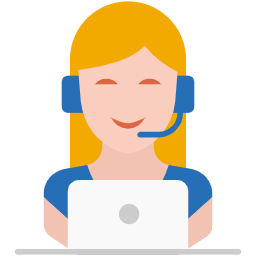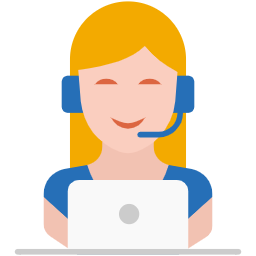ICDL Computer Essentials:
This Course sets out essential concepts and skills relating to the use of devices, file creation and
management, networks and data security.
Module Goals
Successful candidates will be able to:
- Understand key concepts relating to ICT, computers, devices and software.
- Start up and shut down a computer.
- Work effectively on the computer desktop using icons, windows.
- Adjust the main operating system settings and use built-in help features.
- Create a simple document and print an output.
- Know about the main concepts of file management and be able to efficiently organize files and
folders. - Understand key storage concepts and use utility software to compress and extract large files.
- Understand network concepts and connection options and be able to connect to a network.
- Understand the importance of protecting data and devices from malware and of backing up data.
- Recognize considerations relating to green IT, accessibility and user health.
Curriculum
- 7 Sections
- 109 Lessons
- 60 Hours
- Computer and Devices13
- 1.1Define the term Information and Communication Technology (ICT).
- 1.2Identify different types of ICT services/uses like: Internet services, mobile technology, office productivity applications
- 1.3Define the term hardware. Identify the main types of computers like: desktops, laptops, tablets. Identify the main types of devices like: smartphones, media players, digital cameras
- 1.4Define the terms processor, Random Access Memory (RAM), storage. Understand their impact on performance when using computers and devices
- 1.5Identify the main types of integrated and external equipment like: printers, screens, scanners, keyboards, mouse/ track pad, webcam, speakers, microphone, docking station.
- 1.6Identify common input/output ports like: USB, HDMI.
- 1.7Define the term software and distinguish between the main types of software like: operating systems, applications. Know that software can be installed locally or available online.
- 1.8Define the term operating system and identify some common operating systems for computers and devices.
- 1.9Identify common examples of applications like: office productivity, communications, social networking, media, design, mobile applications
- 1.10Define the term End-User License Agreement (EULA). Recognize that software must be licensed before use.
- 1.11Outline the types of software licenses: proprietary, open source, trial version, shareware, freeware.
- 1.12Start a computer and log on securely using a user name and password.
- 1.13Log off, shut down, and restart a computer using an appropriate routine.
- Desktop, Icons, Settings15
- 2.1Outline the purpose of the desktop and the task bar.
- 2.2Identify common icons like those representing: files, folders, applications, printers, drives, and shortcuts/aliases, recycle bin/wastebasket/trash
- 2.3Select and move icons
- 2.4Create, rename, move, and delete a shortcut/alias.
- 2.5Identify the different parts of a window: title bar, menu bar, toolbar, ribbon, status bar, scroll bar.
- 2.6Open, collapse, expand, restore down, maximize, resize, move, and close a window
- 2.7Switch between open windows
- 2.8Use available help functions
- 2.9View the computer’s basic system information: operating system name and version number, installed RAM.
- 2.10Change desktop configuration settings: date and time, volume settings, background, resolution
- 2.11Change, add, and remove keyboard language. Change default language
- 2.12Shut down a non-responding application.
- 2.13Install, uninstall an application
- 2.14Connect a device (USB flash drive, digital camera, media player) to a computer. Disconnect a device using an appropriate routine
- 2.15Capture a full screen, active window
- MS Office31
- 3.1A -MS-WORD
- 3.2A.1 – Introduction
- 3.3A.2 – Font Options, Paragraph Options & Clipboard
- 3.4A.3 – Inserting Pictures
- 3.5A.4 – Drop Cap
- 3.6A.5 – Borders And Shading
- 3.7A.6 – Setting Tab{Left Tab, Center Tab, Right Tab}
- 3.8A.7 – Bullets And Numbering
- 3.9A.8 – Setting Indents
- 3.10A.9 – Tables{Creating, Inserting, Merging, Splitting,Etc}
- 3.11A.10 – Paragraph Formatting
- 3.12B – MS-EXCEL
- 3.13B.1 – Introduction
- 3.14B.2 – Basic Functions{Sum,Average,Count,Etc}
- 3.15B.3 – Font And Alignment
- 3.16B.4 – Changing Date
- 3.17B.5 – Wraptext,Merge And Center
- 3.18B.6 – Absolute Address
- 3.19B.7 – Sort And Filter
- 3.20B.8 – Creating Charts (Column,Pie,Line,Etc) Formatting
- 3.21B.9 – Creating Invoice
- 3.22B.10 – Income Statement Calculation
- 3.23B.11 – Currency, Percentage & Date Formatting
- 3.24C – MS- POWERPOINT
- 3.25C.1 – Introduction
- 3.26C.2 – Creating New Slides, Background & Designs
- 3.27C.3 – Inserting Pictures,Shapes,Charts,Etc
- 3.28C.4 – Inserting Textbox, Word Art,Tables,Etc
- 3.29C.5 – Custom Animation
- 3.30C.6 – Slide Animation
- 3.31C.7 – Slide Show
- Outputs9
- 4.1Open, close a word processing application. Open, close files
- 4.2Enter text into a document
- 4.3Copy, move text within a document, between open documents. Paste a screen capture into a document.
- 4.4Save and name a document
- 4.5Printing
- 4.6Install, uninstall a printer. Print a test page.
- 4.7Set the default printer from an installed printer list
- 4.8Print a document from a word processing application
- 4.9View, pause, restart, and cancel a print job
- File Management20
- 5.1Understand how an operating system organizes drives, folders, files in a hierarchical structure. Navigate between drives, folders, sub-folders, files
- 5.2Display file, folder properties like: name, size, location
- 5.3Change view to display files and folders like: tiles, icons, list, and details
- 5.4Identify common file types like: word processing, spreadsheet, presentation, portable document format (pdf), image, audio, video, compressed, executable files
- 5.5Open a file, folder, drive
- 5.6Recognize good practice in folder, file naming: use meaningful names for folders and files to help with searching and organization
- 5.7Create a folder
- 5.8Rename a file, folder
- 5.9Search for files by properties: all or part of file name using wildcards if necessary, content, date modified
- 5.10View list of recently used files
- 5.11Select individual, adjacent, nonadjacent files, folders
- 5.12Sort files in ascending, descending order by name, size, type, date modified
- 5.13Copy, move files, folders between folders, drives
- 5.14Delete files, folders to the recycle bin/wastebasket/trash and restore to original location
- 5.15Empty the recycle bin/wastebasket/trash
- 5.16Identify the main types of storage media like: internal hard disk, external hard disk, network drive, CD, DVD, Blu-ray Disc, USB flash drive, memory card, online file storage
- 5.17Identify file size, folder size, storage capacity measurements like: KB, MB, GB, TB
- 5.18View available space on a storage device. 4.3.4 Understand the purpose of file, folder compression
- 5.19Compress files, folders
- 5.20Extract compressed files, folders to a location on a drive
- Networks10
- 6.1Define the term network. Outline the purpose of a network: to share, access data and devices securely
- 6.2Define the term Internet. Identify some of its main uses like: World Wide Web (WWW), VoIP, e- mail, IM
- 6.3Define the terms intranet, virtual private network (VPN) and identify their main uses
- 6.4Understand what transfer rate means. Understand how it is measured: bits per second (bps), kilobits per second (kbps), megabits per second (mbps), and gigabits per second (gbps)
- 6.5Understand the concepts of downloading from, uploading to a network
- 6.6Network Access
- 6.7Identify the different options for connecting to the Internet like: phone line, mobile phone, cable, Wi-Fi, wi-max, satellite
- 6.8Define the term Internet Service Provider (ISP). Identify important considerations when selecting an internet subscription option like: upload speed, download speed and quota, cost
- 6.9Recognize the status of a wireless network: protected/secure, open
- 6.10Connect to a wireless network
- IT Security11
- 7.1Recognize good password policies like: create with adequate length, adequate character mix, do not share, change regularly
- 7.2Define the term firewall and outline its purpose
- 7.3Understand the purpose of regularly backing up data to a remote location.
- 7.4Recognize the importance of regularly updating software like: anti-virus, application, operating system software
- 7.5Understand the term malware. Identify different types of malware like: virus, worm, Trojan, spyware
- 7.6Be aware how malware can infect a computer or device
- 7.7Use anti-virus software to scan a compute
- 7.8Recognize ways to help ensure a user’s well-being while using a computer or device like: take regular breaks, ensure appropriate lighting and posture
- 7.9Recognize computer and device energy saving practices: turning off, adjusting automatic shutdown, backlight, and sleep mode settings
- 7.10Recognize that computers, devices, batteries, printer cartridges and paper should be recycled
- 7.11Identify some options available for enhancing accessibility like: voice recognition software, screen reader, screen magnifier, on-screen keyboard, high contrast


